The visit to this
Sri Varahalakshmi Narasimha Swamy Temple at Simhachalam was a part of the “Kalinga
and Ottara Desa Heritage Walk” organized by சோழ மண்டல வரலாற்றுத் தேடல் குழு, between 13th to 18th September
2024. The purpose of this Heritage walk was to see the places, monuments, etc., which are directly or indirectly connected as a proof of Rajendra
Chozha’s victory mentioned in his meikeerthi/title over Kalinga and Ottara Desa, the present Andhra Pradesh and
Odisha.
This Sri Varahalakshmi
Narasimha Swamy Temple is one of the 32 Narasimha temples of Andhra Pradesh.
Moolavar : Sri Narasimha Swamy
Thayar : Sri Simhavalli / Varaha lakshmi
Some of the
salient features of this temple are…..
The hill temple
can be accessed both on the Road and on the steps from the Hill base. Sakshi
Anjaneyaswami Temple and Adavi Ganesh Temple are on the Steps route. Apart from
Sri Varakalakshmi Narasimha Swamy Temple, Sri Tripurantaka Swamy Temple, Seetha
Ramaswamy Temple, Sri Rama Viswambhara Das Maharaj Temple ( Samadhi..?), Sri
Vaikunta Narayana Swamy Temple, Bhulokamamba Ammavari Temple, An Ammavari
Temple, Madhavadhara Temple, Lord Shiva Temple, A Ham Radio station VU2VBR
repeater, and Kesha Kandasala are on the same Simhachalam Hill.
This Sri
Varakalakshmi Narasimha Swamy Temple faces west with Rajagopurams in the West,
South, and North directions, of which West and North are with 5 talas and the
south is of 3 talas. Balipeedam and Dwajasthambam are after the West side of Rajagopuram. Footprints of Sri Chaitanya Maha Prabhu visited this temple in the year 1516 CE, installed by Bhaktisiddhanta Sarasvati
in 1930. The footprints are on the North side of the steps beginning.
In Sanctum
Sanctorum Moolavar is in the shape of Shiva Lingam, covered with sandal paste
on Maha Vishnu’s idol. The sandal paste will be removed for 12 hours of darshan on
Vaishaka Sudda Thadiya Day/ Akshaya Truthiya Day. In koshtam,
Varaha Swamy, Narasimhar, and Maha Vishnu as Thiruvikrama. Radha, Krishna, Alwars
and Utsavars are in Jagamohan Mandapam.
In praharam,
Lakshmi Narayana, Andal, Ramanujar, Bhaktha Prahalad mandapa, Krishnamacharlu, Yaga
Sala, Natya Mandapa, and Oil well. Moolavar’s jewels/ornaments museum is on
the South West corner of the temple complex.
Stucco images of
Narasimha with various weapons are in the niches of the west side compound wall.
Stucco images of Maha Vishnus’s various postures and Dasavatar are on the top
of the compound wall.
ARCHITECTURE
The temple
consists of Garbhagriha, Jagamohan, and Nattamandira, built in a fusion of Kalinga
and Dravida Architecture. Both
Garbhagriha and Jagamohan Vimanas are in
pidha style architecture. The Sigaram are in Dravida vesara style.
The sanctum
sanctorum or the Garbhagriha is on a prati bandha adhistanam with jagathy (miniature
/inch sculptures), Vrudha kumudam kapotam, and Prativari. The Vimana is of 3
tiers in pidha Duela Kalinga style, like a stepped pyramid. The sanctum sanctorum walls have the sculptures of Kalinga
style similar to Konark. The south wall
has the sculpture of Narasimha Killing Hiranyakashipu keeping his lap and
Parahalada is in standing posture. Narasimha is with 4 arms. The upper arms are
holding Shankha and Chakra and the Lower arms are tearing Hiranyakashipu’s stomach. The north wall has the sculpture of Varaha in three bangha posture. The sculpture of
Krishna lifting Govardhana is above Varaha. The corners of the base of the
vimana bear lion statuettes symbolizing Narasimha. On the eastern face of the Vimana,
images of Indra and Gajalakshmi are found. The pilasters are of Brahma Kantha
pilasters. Elephant heads with raising trunk sculptures are in the Jagathy and
Viyyalavari. Stucco images of Ashtadikpalas and Maha Vishnu’s Dasavatar are on
the Vimana.
The jaganmohan
Mandapa adhistanam is with Padma jagathy, 16 patta Kumudam, and Prativari. The
Pillars are with malai thongal, kalasam, kudam, lotus petals mandi, and
pothyals. In Malai thongal, pearls come out of Lion’s mouth.
The Natya mandapa
is on the right side after the North side Rajagopuram entrance. The mandapa is
supported with 16 black granite stones. The mandapa pillars have with squatting
lion at the bottom, malai thongal, kalasam, kudam, lotus petals mandi, and
pothyals. Miniature sculptures are on the pillar square and center. The
Pothyals are of different kinds, some with lotus flowers, facing down and side, etc. The Vishnu and Krishna avatar’s miniature sculptures are on the pillars.
The kalyana
mandapa is with 96 pillars. The pillars have the bas reliefs of various avatars
and forms of Maha Vishnu, Maha Lakshmi, and Alwars.
Temple History:
The exact
year and the King constructed this temple are not known. The Vengi Chalukyas of
Andhra Pradesh renovated the original shrine in the 11th century.
The present structure of the temple was renovated by Narasimha-I of the east Ganga
Dynasty, in the second quarter of the 13th century CE (1267 CE) and
consecrated by his son Bhanudeva-I, in 1268 CE.
More than 523
inscriptions are recorded from this temple and published in South Indian
inscriptions Volume -6, from 692 to 1215. Most of the inscriptions record the
burning of lamps in the sanctum sanctorum, prayers, and offerings, for the same
donation given in terms of money, gold, lands, etc.
The SII Volume-6,
inscription 1144 (ARE 363 of 1899) is inscribed in Tamil is the earliest. This inscription
is partially damaged from lines 41 to 79. The Chozha king Kulothunga Chozha-I’s
Saka 1087, 1165 CE, inscription, starts with his meikeerthi, records the
establishment of an endowment of Maduranthaga Brahmaraya sandhi naivedyam, for
the same 10 maadai Gold was deposited in the treasury of this temple. Also, land was gifted as Irayili and the yield from the land has to be deposited in
the treasury.
Another Tamil
inscription SII Volume-6, No 1175, ARE 365-VIII, of 1899, records the endowment
of burning a perpetual lamp, for the same 5 maadai pon was deposited in the
Treasury. The endowment has to continue till the Sun and Moon exist from the
interest earned.
Tamil
inscription SII Volume -6, No 1214, ARE 365-XLVII, of 1899, without King’s
name, but 22nd reign year inscription records the gift of a flower
garland to the God, by the Chozhamandalathu Thiruvaduthurai alias Vuruthuraja payangarapuram
merchant Siruvandur Kizhavan Petran Rajendra Chozheecharamudaiyan.
Another Tamil
damaged incomplete inscription SII Volume -6, No 1215, ARE 365-XLVIII, of 1899,
without King’s name, records the endowment of Thirumanjanam (sacred bath), on two
auspicious days, for the same total 120 maadai pon was gifted to this temple,
by a merchant.
As per the Vijayanagara
period inscriptions records the King Krishna Deva Raya, visited this
temple in the years 1516 & 1519 C.E, after he defeated Gajapati ruler of Orissa Gajapati
Prataparudra Dev on two different accounts.
The
fragmentary damaged inscription in Telugu on the outside wall dated Saka 1089
(1167 CE) Uttarayana Sankranti, seems to be the record of the gift of 100
naragadyanas (gold coins) as a deposit in the temple pandaram (treasury) by
Tirupana Dasari Kuntta for lighting the perpetual lamp to Lord Narasimha, on
Uttarayana Sankranti." Tirupana Dasari Kuntta wanted the treasury to light
'Akhanda Deepam' in the sanctum sanctorum. The inscription also mentioned the
measurement known as 'Narasimha Manika', used to measure the oil in that
particular region. (An Article in The New Indian Express dated 2023).
The recent
finding by an Epigraphist Bhisnu Mohan Adhikari, the inscriptions on a pillar
in the temple's 'Asthana Mandapam,' consists of two rows and three columns,
reads: "Aatreya Gotravathi Sri Sri Sri Nilamani Pattamahadei Sada Seva
Raghunathapur," written in Odia, reveals a donation made by Queen Gajapati
Nilamani Patta Mahadevi of the Eastern Ganga dynasty for the "Sada
Seva," or daily offerings to the presiding deity, Sri Varaha Lakshmi
Narasimha Swamy. The inscription also mentions the queen's gotra, referring to
her as "Aatreya Gotravati" and her royal estate, Raghunathapur, which
was part of the Ganjam District during the Madras Presidency. (An Article in
The New Indian Express dated 12th Aug 2024)
Ref:
1. FB of the Sri
Varahalakshmi Narasimha Swamy Devasthanam.
3. The Indian Express Dated 12th Aug 2024 & 2023.
4. South Indian
Inscriptions Volume-6. Nos 692 to 1215 (ARE 1899).
LEGENDS
As per the
legend, the two Demon brothers (the Jayan and Vijayan, the Dwarapalakas in
their previous birth), Hiranyakashyap and Hiranyaksha, whose main aim was to become
a God of the Universe, like Maha Vishnu. Hiranyaksha took the earth (Bhudevi)
and concealed it under the pathala loka. Maha Vishnu took the form of Varaha
retrieved the earth from Hiranyaksha and killed him. On hearing the death of
Hiranyaksha, Hiranyakashyap swore to take revenge on Maha Vishnu.
Hiranyakashyap,
did a penance on Brahma and obtained a boon of not being killed by, either man
or animal, during day or night, inside or out of the palace, on the ground or in
the air, and with or without a weapon.
After getting
the boon, Hiranyakashyap, the demon King started to behave like a God and
ordered his people to worship him and chant only his name. But his son Prahalad
was an ardent devotee of Maha Vishnu, hearing the name, since he was in his
mother’s womb didn’t obey his father’s order. Hiranyakashyap, compelled to
worship only him. Prahalad, didn’t listen to his father and chanted only the
name of Maha Vishnu and told him that he was everywhere in this universe. This made
Hiranyakashyap angry and tried to kill his own son, many times, but failed.
At one stage,
Hiranyakashyap, asked his son, whether his God Maha Vishnu was in the pillar to
come out and save you. Prahalad replied, yes. Irritated Hiranyakashyp, beat the
pillar with his gatha. Maha Vishnu in the form of Narasimha ie Simha's head and the human body, broke the pillar and appeared, during the Day and Night meet. Maha
Vishnu, took and kept Hiranyakashyp on his lap (not on the floor or in the
space), sitting on the frame of the Palace door (not outside or nor inside),
tore the stomach with his nails. Took out the intestine and used as garland and
killed him. Later Prahalad built a temple of Maha Vishnu on this Hill Simhachalam.
(This
legend in Tamil Nadu is little modified in Andhra Pradesh. In that Hiranyakashyp’s
soldiers threw Prhalad from the Mountain, The soldiers kept the mountain on
Prahalad, etc.)
It is
believed that the original temple was dedicated to Shiva and the Moolavar is a
Shiva Linga. The Shiva temple was converted as a Maha Vishnu Temple, by Ramanuja.
POOJAS AND
CELEBRATIONS
Apart from
regular poojas as per pancharatra agama, special poojas are conducted on Chandanotsava
on Akshaya thiruthiya day ( the sandal paste will be removed and nija pada
darshan will be given to the devotees ), Pellivari Rata utsavam, Kalyanotsava,
Narasimha Jayanthi, Navaratrotsava, Kamadahana Utsavam with Dolotsava
Utsavam, Krishna Janmashtami, Kartika Deepavali, and many mini-festivals. Devotees
circumambulate the hill on Pournami / full moon days as Giripradakshina.
TEMPLE
TIMINGS
The temple
will be kept open between 07.00 hrs to 11.30 hrs, 12.30 hrs to 15.00 hrs, and
16.00 hrs to 19.30 hrs. During pooja times Darshan is not allowed.
CONTACT
DETAILS
The landline
numbers of the temple are +91891-2764949 and +91891 2979666.
HOW TO REACH
All the APSRTC buses and Private buses will run up to the base of
the Hill. From the base of the Temple can be reached, through Devasthanam bus, Auto,
Van or Car, etc.
From Visakapattinam Railway Station, bus route no 6A, from Dwaraka
bus stand bus routes nos 6A, 28, and 40, from Gajuwaka bus no 55, and from
Maddilipalem bus No 540, runs up to the base of the Simhachalam Hill.
Nearest Railway
Station is Visakapattinam (About 17 KM).
LOCATION OF
THE TEMPLE : CLICK HERE








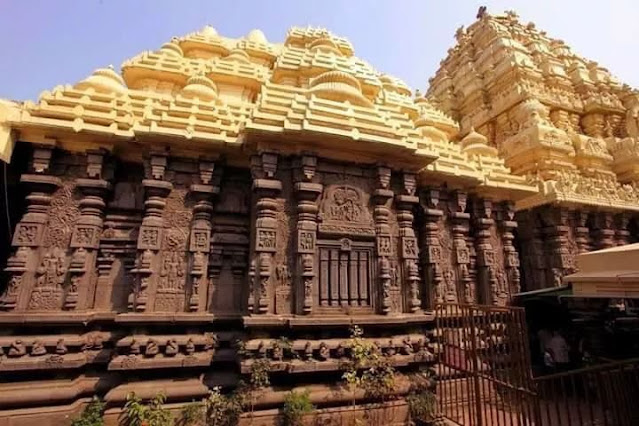
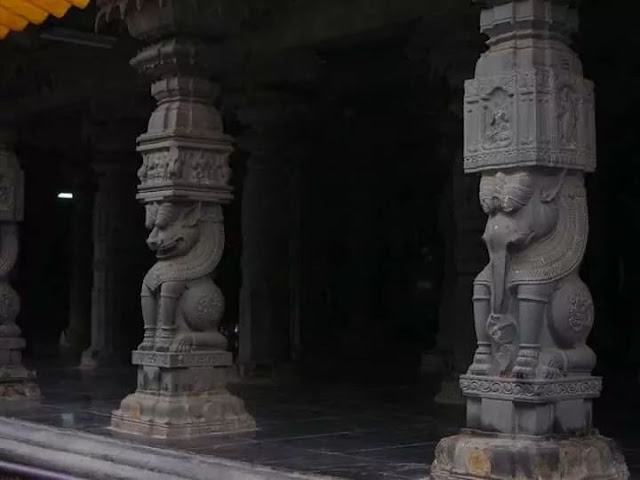

.jpeg)
.jpeg)






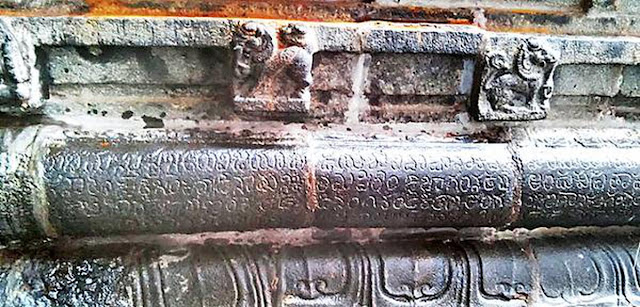
.jpeg)

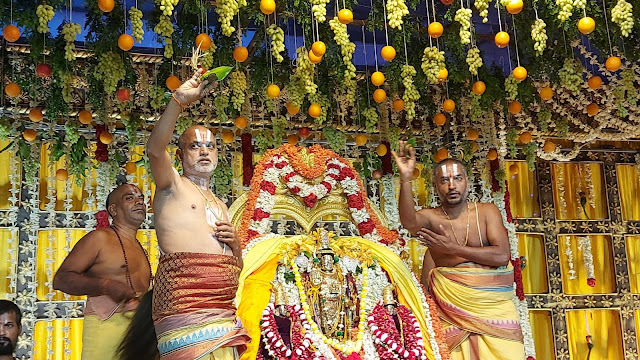










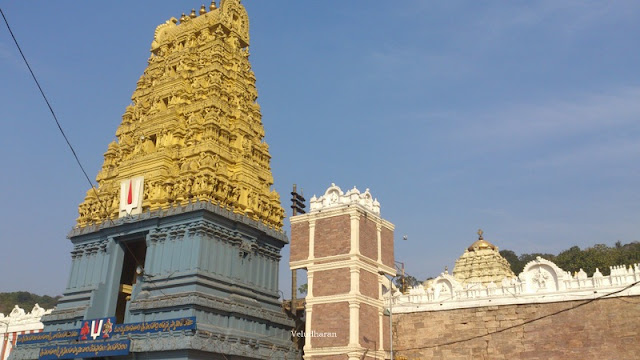
Very pretty. Hope to worship there one day.
ReplyDeleteThanks for visiting my blog and wishing you all the best..
Delete